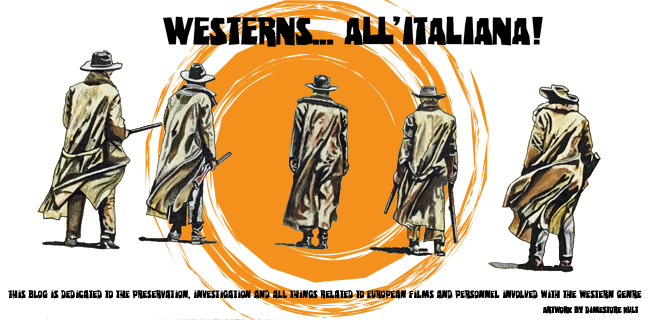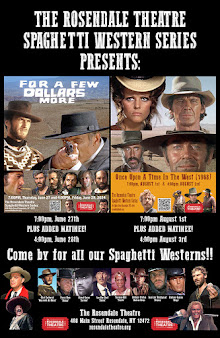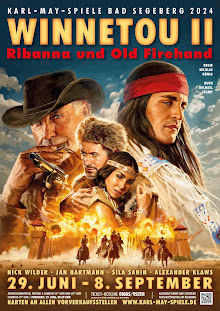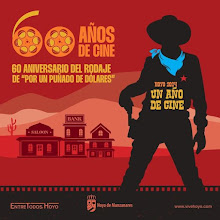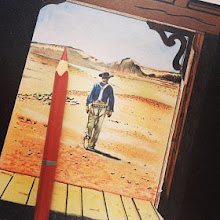Many of Sergio Leone’s film locations are seen in
different films. He had a habit of turning the camera a different angle and
therefore could use the same location he had used in a previous film. A prime
example is in “Once Upon a Time in the West”. In the opening scene at Cattle
Corner if you look across the track from the water tower you’ll see a small
building. This was the Tucumcari Station
seen in “For a Few Dollars More. In the scene where Jill arrives in Flagtone
you can see across the tracks in the background to the station where Tuco was
loaded on to the boxcar in “The Good, the Bad and the Ugly”.
Friday, November 30, 2018
El Bandito Joaquin Murrieta & The Legend of Zorro!
The Legendary Movie Bandito Zorro was based on a
California Legend
By Federico de
California
El Bandito Joaquin Murrieta. Was he Real? Was he Killed
as some Say? Or Did he Live On in California for Many more years after his
rumoured, but not Confirmed Death in the Hills of Central California in 1853 ?
This is a Story that Legends, Books, Movies are Made of..and it doesn’t get any
more California than That…
Depending on a California pioneer’s point of view in the
mid 19th century, Joaquin Murrieta was described by some as a Mexican Robin
Hood of El Dorado ~ robbing from the Rich & Giving to the Poor, while
others would say he was nothing but a Vicious Desperado ~
So many tales have grown up around Murrieta that it is
hard to disentangle the fabulous from the factual. There seems to be a
consensus that Anglos drove him from a rich mining claim, and that, in rapid
succession, his wife was raped, his half-brother lynched, and Murrieta himself
horse-whipped. He may have worked as a monte dealer for a time; then, according
to whichever version one accepts, he became either a horse trader and
occasional horse thief, or a bandit…
On May 11, 1853, Governor of California John Bigler
signed a legislative act creating the “California State Rangers“, led by
Captain Harry Love (a former Texas Ranger). The California Rangers were paid
$150 a month and stood a chance to share the $1,000 governor’s reward offered
for Joaquin Carrillo. On July 25, 1853, a group of Rangers encountered a band
of armed Mexican men near Panoche Pass in San Benito County, 50 miles from
Monterey. A confrontation took place, and two of the Mexicans were killed. One
was claimed to be Murrieta, and the other was thought to be Three-Fingered
Jack. A plaque (California Historical Landmark #344) near the intersection of
State Routes 33 and 198 now marks the approximate site of the encounter.
The Rangers severed Garcia’s hand and the alleged
Murrieta’s head as proof of their deaths and preserved them in a jar of
alcohol.[1] The jar was displayed in Mariposa County, Stockton, and San
Francisco, and later traveled throughout California; spectators could pay $1 to
see them. Seventeen people, including a Catholic priest, signed affidavits
identifying the head as Murrieta’s, alias Carrillo, so Love and his Rangers
accordingly received the reward money.
The head was displayed at Gordons Museum in San Francicso
through 1906, when the earthquake of 1906 destroyed that building. The head was
originally sold by Billy Henderson of the Califonia Rangers for $35, who
returned with it from the Arroyo Cantua where Joaquin met his end.
In the early 1850’s Joaquin Murrieta roamed this land.
Most famous as an avenging outlaw or a Robin Hood, Joaquin Murrieta and his men
were above everything else horsemen, and of the best of breeds. Wild horses,
abundant in those days around the Sacramento Delta, were rounded up by Joaquin
and his men and driven to Sonora, Mexico, where they were sold at high prices.
One of Joaquin’s favorite camps was at this spot because
he claimed the water here was the best in the country where he rode. This
fountain is over the artesian well that Joaquin Murrieta favored to water his
herds of wild mustangs.
Fact or Fiction ~ In True California Style the Legend of
Joaquin Murrieta inspired the First SuperHero..! Before SuperMan, Hopalong
Cassidy, Dick Tracy, SpiderMan, IronMan, Luke SkyWalker, Indiana Jones or even
Avatar…There was Zorro..!
Zorro was created in 1919 by pulp writer Johnston
McCulley. He has been featured in several books, films, television series, and
other media.
Zorro (Spanish for fox) is the secret identity of Don
Diego de la Vega (originally Don Diego Vega), a nobleman and master living in
the Spanish colonial era of California. Not only is he much too cunning and
foxlike for the bumbling authorities to catch, but he delights in publicly
humiliating those same foes.
Magazine Cover featuring an original Zorro Story-1919
Zorro (often called Señor or El Zorro in early stories)
debuted in McCulley’s 1919 story The Curse of Capistrano, serialized in five
parts in the pulp magazine All-Story Weekly.[1] At the denouement, Zorro’s true
identity is revealed to all.
Douglas Fairbanks and Mary Pickford, on their honeymoon,
selected the story as the inaugural picture for their new studio, United
Artists, beginning the character’s cinematic tradition. The story was adapted
as The Mark of Zorro in 1920, which was a success. McCulley’s story was
re-released by the publisher Grosset & Dunlap under the same title, to tie
in with the film.
Due to public demand fueled by the film, McCulley wrote
over 60 additional Zorro stories starting in 1922. The last, The Mask of Zorro
(not to be confused with the 1998 film), was published posthumously in 1959.
These stories ignore Zorro’s public revelation of his identity. The black
costume that modern audiences associate with the character stem from Fairbanks’
smash hit movie rather than McCulley’s original story, and McCulley’s
subsequent Zorro adventures copied Fairbanks’s Zorro rather than the other way
around. McCulley died in 1958, just as the Disney-produced Zorro television
show was becoming phenomenally successful.
When I was a kid my Favorite T.V. Show was the Disney
version of Zorro. He was much cooler than SuperMan or Batman, rode a Black
Stallion & Always had a Foxy Senorita on his arm…
Zorro was also a California Homeboy…a True Swashbuckler
sporting True California Style.. And as we know, in Calfornia image is
Everything, Fact or Fiction…it Doesn’t Really Matter…
Seven Against Kansas
Seven Against Kansas
A 1969 U.S.A., Spanish film co-production
Producer:
Director: David Friedkin
Story:
Screenplay:
Cinematography:
Music:
Running time:
Story:
Cast:
Richard Crenna, Robert Conrad, Tippi Hendren
[film was never completed]
Thanks to Michael McQuarrie for this information.
Subscribe to:
Posts (Atom)
